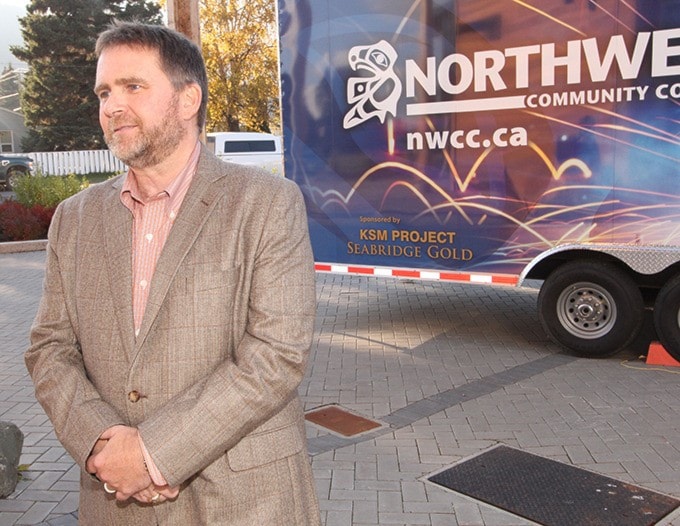Seabridge Gold’s KSM project continues to move through the approval process.
This summer, the KSM project was accepted into the environmental assessment review process. That 180-day review period started August 12. Part of the review is a 45-day public comment period, which is open until Oct. 21.
Last week, the Canadian Environmental Assessment Agency hosted an open house in Smithers to give the public an opportunity to provide feedback on the project.
Seabridge Gold CEO Brent Murphy said the company has been working on the project since 2006 and said many public questions surround employment opportunities that KSM may open up.
“We think KSM will be a key economic anchor for northwestern B.C.,” Murphy said, adding environmental concerns are also raised often.
Since 2006, Murphy said Seabridge Gold has been working closely with First Nations and other organizations set to be impacted by the proposed mine in an attempt to gain acceptance for KSM.
“We have been going out and listening to the communities, soliciting their input and have made numerous design changes to the project in order to address some of the questions and concerns we heard... ” Murphy said.
The proposed copper/gold mine is located 65 kms northwest of Stewart and has proven and probable reserves of 38.2 million ounces of gold, 9.9 billion pounds of copper, 191 million ounces of silver and 213 million pounds of molybdenum.
KSM is expected to process about 130,000 tonnes per day of ore over a mine life of up to 55 years.
Late this summer, Smithers Mayor Taylor Bachrach and councillor Bill Goodacre were given a tour of the proposed mine. Shortly after, town council passed a motion of support for the KSM project.
“Mining projects like this are an important part of our history in the Bulkley Valley and I think most people in the valley want to see this as part of the economic mix,” Bachrach said.
“It employs a lot of people. Projects that are able to gain the support of First Nations and show that they can take care of the environmental quality can deliver huge benefits for communities in the northwest.”
In September, Oo’yee (Cliff Sampare), a board member of the Gitxsan Treat Society, also expressed his support for the KSM project.
Results of the environmental assessment are due Feb. 2014.
